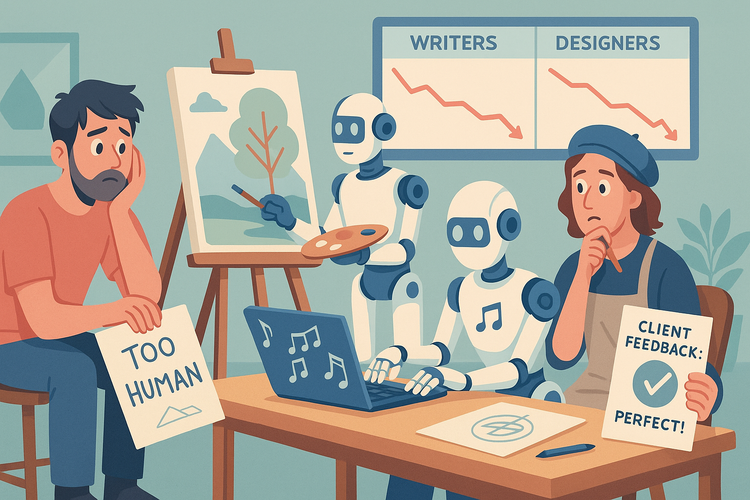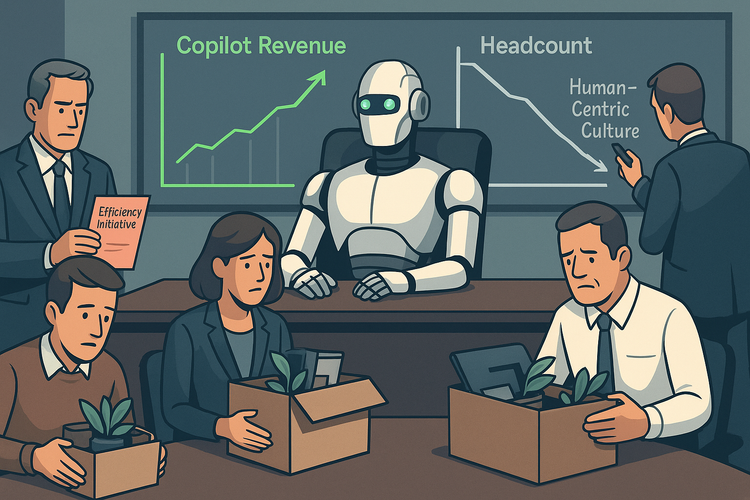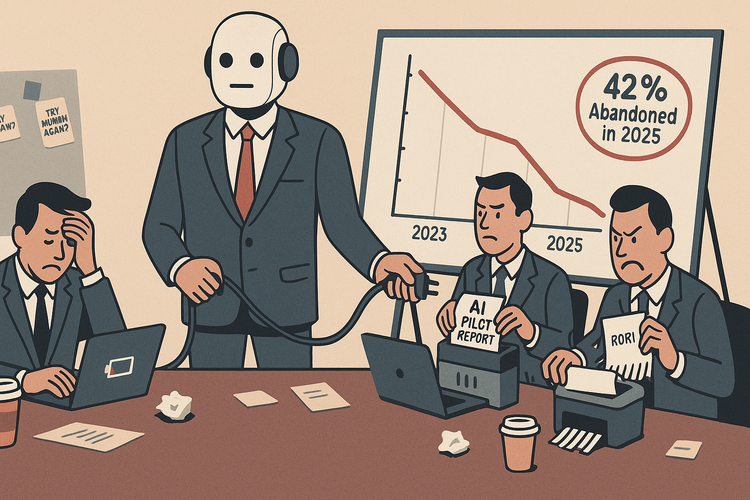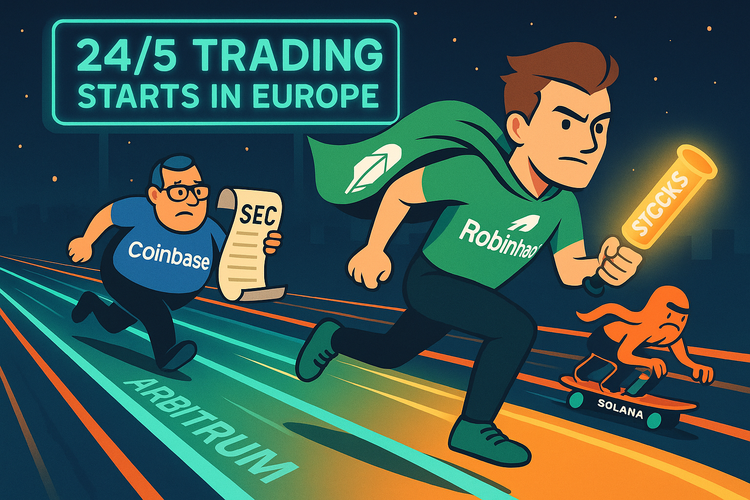Why AI Is Making Water the Next Big Investment
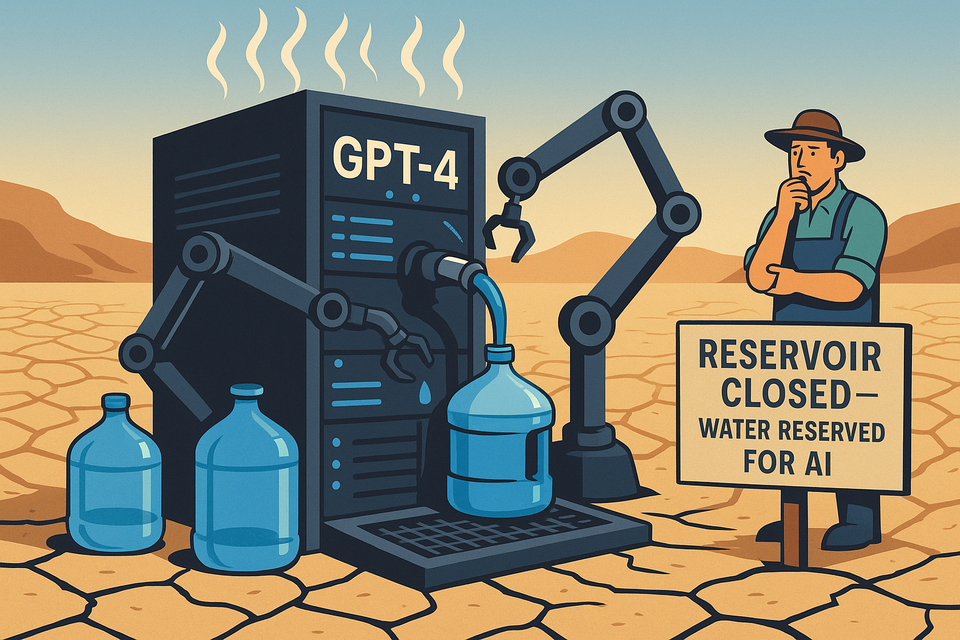
Summary
AI boom is making data centers thirsty.
Each ChatGPT query? Half a liter down the drain.
Governments are worried, and investors are circling.
Here’s why water might be the most underrated trade of 2025.
So… AI Is Drinking the Planet?
You thought GPUs were expensive?
Try water.
Every time you ask ChatGPT if it’s sentient or how to write a breakup text, it quietly slurps down 500 milliliters of water. Not metaphorically. Literally. To cool the servers, mostly.
Multiply that by a billion queries, and suddenly we’re not just training AI — we’re dehydrating it.
The Numbers Are… Wet
Let’s start with some fun trivia:
- A typical 1 MW data center needs up to 25.5 million liters/year of water just for cooling.
- U.S. data centers will guzzle 150–180 billion liters annually by 2028.
- One GPT-3 training cycle? Think hundreds of thousands of liters. It’s like raising a virtual whale.
- And inference? A single question to Claude.ai or Gemini uses about 300–600ml of water. It’s practically a hydration strategy.
And where are these water-hungry server farms being built?
In… wait for it… deserts.
Arizona, Texas, California, and parts of Europe already facing drought are now hosting the AI equivalent of Olympic swimming pools.
Because sure, what’s better than running liquid-cooled GPUs in a water crisis zone?
Policymakers: “Maybe Let’s Not Die of Thirst?”
To be fair, governments are starting to notice that AI might be drying out their water tables.
U.S. moves:
- Proposals for mandatory water usage disclosures
- Impact assessments for new AI data center builds
- Hinting at penalties for excess usage in high-stress regions
EU measures:
- Under the AI Act, companies must disclose energy and water use
- Discussions underway for minimum water efficiency standards
- Funding pilots for liquid immersion cooling and water reuse systems
Big Tech isn’t oblivious either.
AWS is pledging “water positivity by 2030” (whatever that means), and Microsoft is experimenting with nonpotable cooling and replenishment offsets.
Still — it’s all a bit… late?
The Investment Angle: Bet on the Pipes
Now to the fun part.
If AI is causing a water crisis, then someone’s gotta sell the solution, right?
Here’s who’s likely to benefit:
Water Tech & Utilities
| Company | What They Do |
|---|---|
| Xylem (XYL) | Pumps, analytics, treatment – full water infra stack |
| Pentair (PNR) | Residential and industrial water systems |
| American Water Works (AWK) | Largest U.S. water utility |
| Veolia (VEOEY) | Global water recycling & reuse leader |
Water ETFs
| ETF | Focus |
|---|---|
| PHO | Invesco Water Resources – purification & conservation |
| FIW | First Trust Water – infra & treatment companies |
| IH20 | iShares Global Water – utilities and global exposure |
So yes. The AI trade may be overcrowded. But the “water because of AI” trade?
Still early innings.
Why It Matters
AI didn’t just create a chip war.
It accidentally created a resource war — for something that humans and GPUs both need to survive.
This isn’t just about climate guilt.
It’s about governments rewriting infrastructure rules, investors rotating into water plays, and cloud providers realizing that “scale infinitely” might require plumbing permits.
We're used to asking:
“What does AI want from us?”
Maybe a better question now is:
“What does AI want to drink?”
Sources
- White & Case – AI in Water Management
- MIT News – Generative AI Environmental Impact
- Bloomberg – AI and Data Center Water Impact
- U.S. News – Best Water Stocks and ETFs
- IJPREMS – Impact of Generative AI on Water Resources (PDF)
- TechStrong – AI Data Centers and Water Worries
- ITPro – EU Data Center Water Consumption
- First Trust – FIW ETF Overview
- Invesco – PHO ETF Detail
- Morningstar – Water Stocks and Funds to Consider

